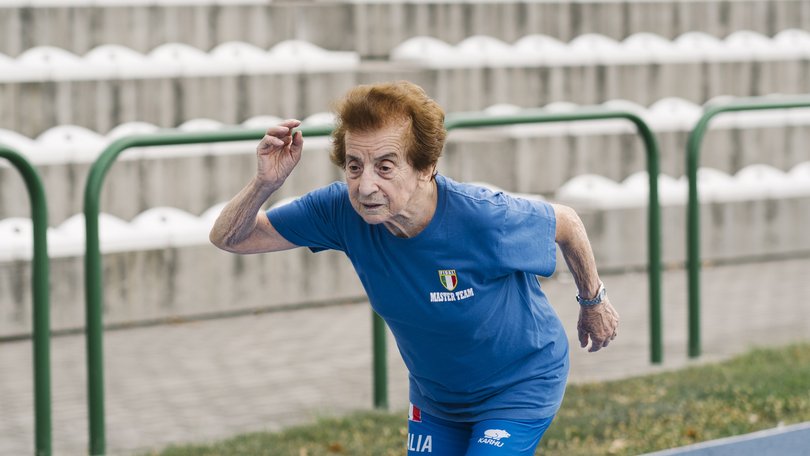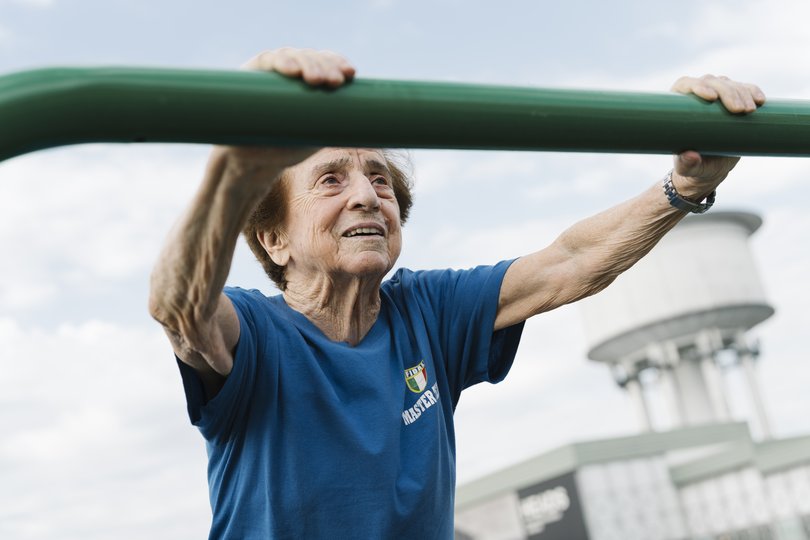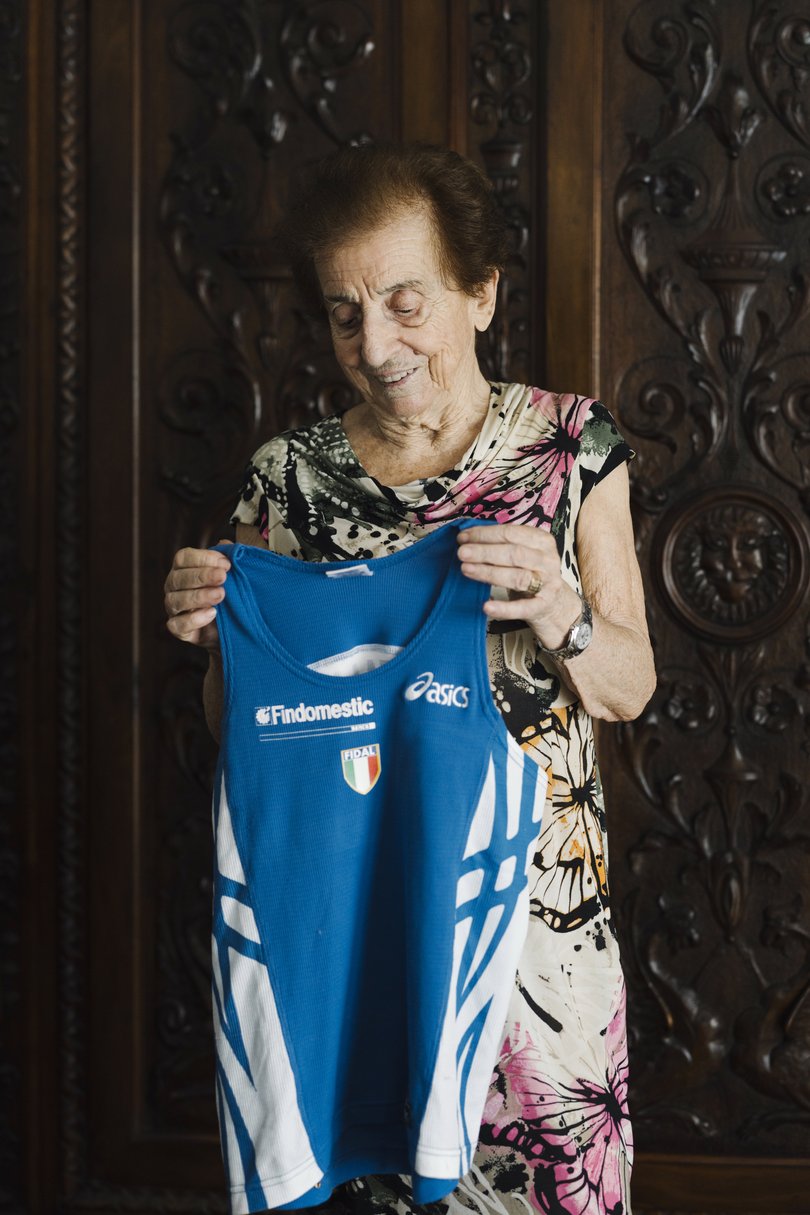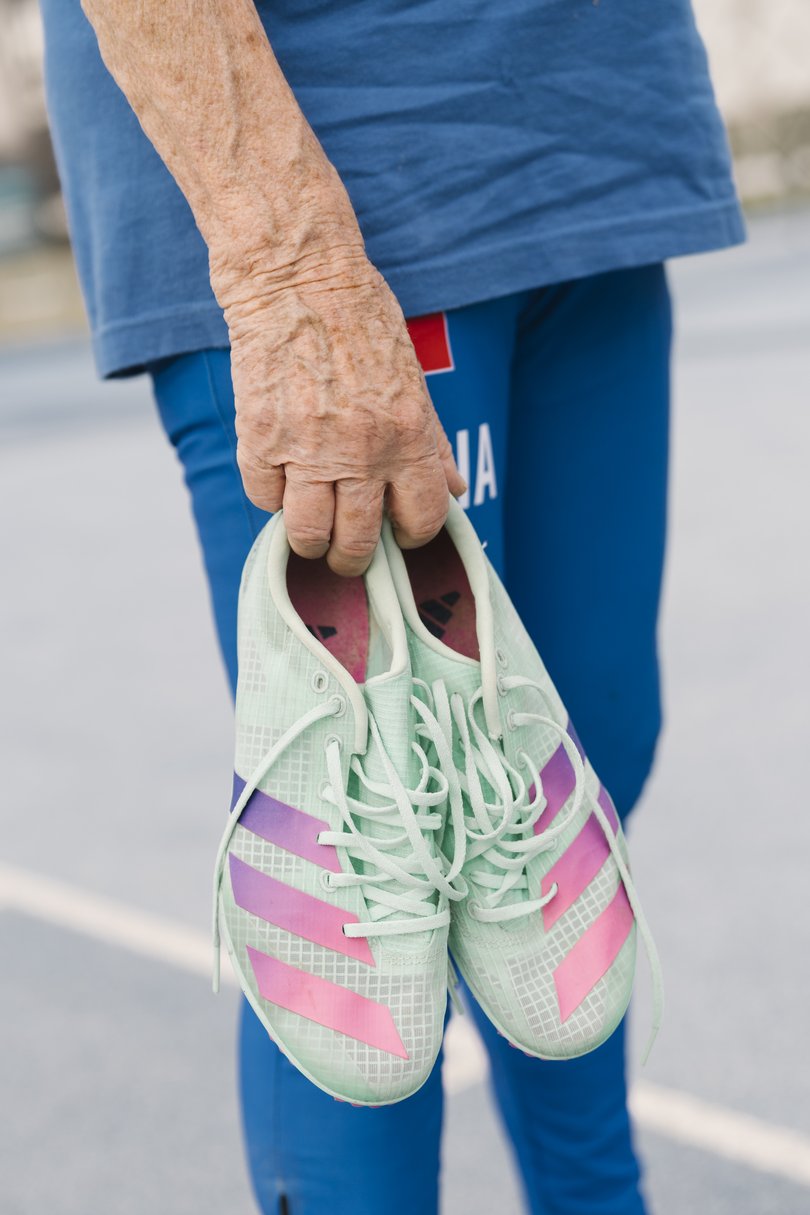THE WASHINGTON POST: This 92-year-old sprinter has the muscle cells of someone in their 20s

Emma Maria Mazzenga likes to win.
She once dislocated her shoulder during a race in Germany when she threw herself ahead of a competitor at the finish line. “The woman next to me was about to overtake me,” Mazzenga said, who ended up winning the race in 2012. She was 79.
Now 92, Mazzenga, who lives in Padua, Italy, is running out of competition. At 5-foot-1, she’s an elite sprinter with four age-group world records to her name - and very few opponents to race against.
Sign up to The Nightly's newsletters.
Get the first look at the digital newspaper, curated daily stories and breaking headlines delivered to your inbox.
By continuing you agree to our Terms and Privacy Policy.“In Italy, it’s just me,” Mazzenga said in Italian over the phone in July. “At the world championships, it was me and an American.”
Last year, Mazzenga broke the outdoor 200-meter world record for women over 90 with a time of 51.47 seconds. A month later, she bested her record by a second. In both events, she was racing against herself.
Scientists in Italy and the US are now studying Mazzenga’s muscles, nerves and even her mitochondria - the powerhouse of the cell - to better understand how she’s able to keep running into her 90s.
By some measures, Mazzenga appears to have the cardiorespiratory fitness of someone in their 50s and her muscle’s mitochondria function as well as a healthy 20-year-old, the researchers said.
The international case study of Mazzenga’s physical fitness is part of a broader, years-long effort by researchers in Italy to better understand how muscles change as we age.
Marta Colosio, a postdoctoral fellow at Marquette University and the first author of the case study, said she hasn’t been able to find a 90-year-old who can compare to Mazzenga.
“She’s aging,” Colosio said. “But she can do things that at 91, people can’t do.”

‘The perfect subject’
Mazzenga said “all hell broke loose” when she broke the indoor 200-meter world record for her age group last January with a time of 54.47.
“I ended up in the newspapers - something which had never happened before,” she said.
Simone Porcelli, a co-lead of the study and an associate professor of human physiology at the University of Pavia in Italy, was one of many Italians who saw the news of Mazzenga’s world record. He was in the middle of coordinating a longitudinal study measuring the physical function of more than 100 middle-aged and older adults in Italy. And Mazzenga was “the perfect subject for our project,” he said.
By studying elite older athletes, researchers are able to learn more about what’s possible as we age, said Chris Sundberg, a co-lead of the study on Mazzenga, and the director of the Integrative Muscle Physiology & Energetics Laboratory at Marquette University.
Mazzenga is a retired high school science teacher who still subscribes to scientific journals. So, when Porcelli reached out, she was happy to participate. One morning last spring, Porcelli drove two and half hours to pick her up for a day of testing at the University of Pavia.
In the lab, the researchers used a needle to collect a piece of muscle the size of a pencil eraser from Mazzenga’s quadriceps, Sundberg said. And, they flew a sample overnight to Marquette University for testing.
Under a microscope, Mazzenga’s muscle proved to be a mosaic of both the expected and extraordinary. Her fast-twitch muscle fibers, which are associated with speed, resembled those of a healthy 70-year-old - good for her age but not exceptional. She has some normal age-related muscle loss, Colosio said. At 89, Mazzenga ran the indoor 200-meter faster than she does now - a 48.98.
But Mazzenga’s slow-twitch muscle fibers, which are associated with endurance activities, looked like those of a 20-year-old, as did the blood flow and nerve pathways to her muscles.

The researchers put Mazzenga through tests such as cycling and lifting weights to assess her cardiovascular fitness, and the strength of her legs. She’s particularly effective at delivering oxygen to her muscles, and the mitochondria in her muscle are “well preserved,” Sundberg said.
“Either through genetics or her lifestyle - or a mixture of both - she is able to keep that communication between the brain, between the nerves and the muscle at a much healthier level than what we typically see in a 90-year-old,” Sundberg said. The well-functioning parts of Mazzenga’s muscle appear to be “almost compensating” for her fast-twitch muscle fibers, he said.
Colosio presented preliminary findings at conferences in Baltimore and Italy earlier this year, and the researchers are planning to submit three papers for peer-review in academic journals.
“We’re not done studying the muscle,” Sundberg said. “We have a lot of other experiments in the pipeline to get a true holistic picture of what’s going on in her muscle.”
‘I never spend a whole day indoors’
Mazzenga started running track and field at the University of Padua, where she studied biological sciences, when she was 19 years old. She continued racing after graduating from college in 1957, but she stopped after four more years of competition because her mother was sick. Two years later, she got married and had two children.
She didn’t return to running until 25 years later, when she was 53.
Nowadays, in the summer, Mazzenga trains at Stadio Colbachini, a track in Padua, or on the riverbank near her house. She runs two or three times a week and goes for a walk on her off days.
“I never spend a whole day indoors,” she said.
Her track workouts last about an hour. She starts with a warmup - some slow running - followed by short stretches of running (about one-third of a mile). Then, she’ll practice running whatever distance she’s preparing to race, with rests in between.
Mazzenga’s advice for other older athletes: Know your limits. Meet with your doctor, first, to make sure you’re fit to start running. Then, stay consistent - run multiple times a week.

At the height of the coronavirus pandemic, Mazzenga said she ran inside - in a 20-meter-long (about 22 yards) corridor of her house. Or, she’d sneak out at night and run around the block.
“Sports have given me so much,” Mazzenga said. “I’d say it’s been a lifesaver. I don’t like getting by - just waiting for dusk to fall. I need action.”
‘It’s never too late to get started’
Bas Van Hooren, an assistant professor in nutrition and movement sciences at Maastricht University in the Netherlands, has published three case studies of elite runners in their 70s. And the key to their success has been consistency, he said.
“A lot of the detrimental effects that you see with aging can be substantially reduced if we just keep those physical activity levels very high,” Van Hooren said.
The good news is: “It’s never too late to get started,” he added. All of the runners he’s studied started training in middle age.
Luigi Ferrucci, the scientific director at the National Institute on Aging in Baltimore who isn’t involved in the study, said the researcher’s findings are “very, very good,” but healthy aging is about more than just muscle.
To stay physically and mentally active later in life, a person needs a holistic approach to nutrition, cognition and exercise, Ferrucci said. “Exercise is a good base but you need to do a lot more. You need to take care of your entire body.”
Mazzenga said when she’s training she eats “what she generally eats.” And, she cooks “very simple things” such as steak, fish, fried eggs and “a little pasta, a little rice.” But, she avoids eating anything three hours before running.
Mazzenga is currently training to race the 100- and 200-meter in September in Catania, Italy. After the competition, she plans to return to the University of Pavia for another day of testing. Then, in November, she’ll start training indoors for the winter season.
“But, given my age, that’s not a given,” she added. “I make plans month by month, not beyond that.”
© 2025 , The Washington Post
